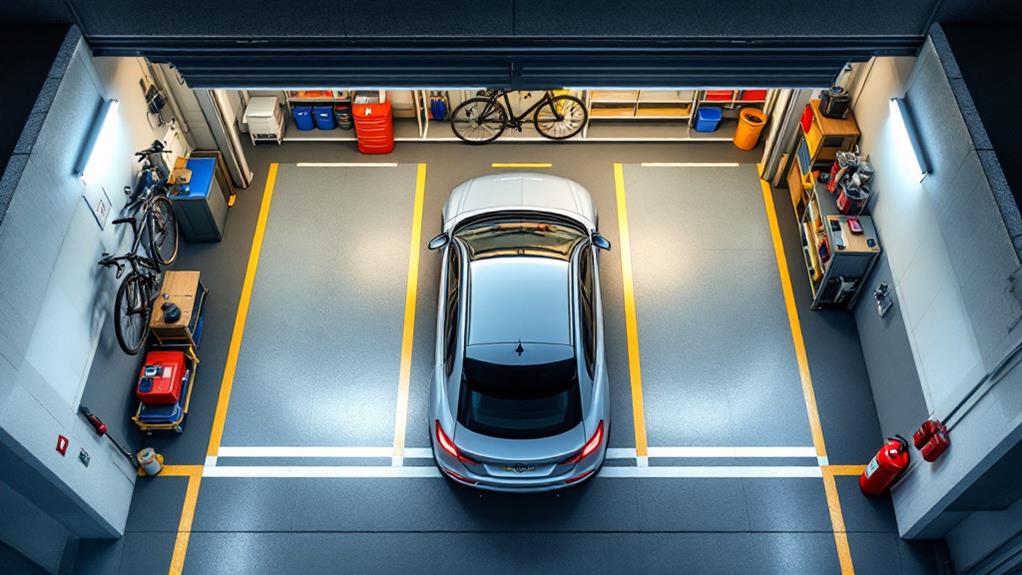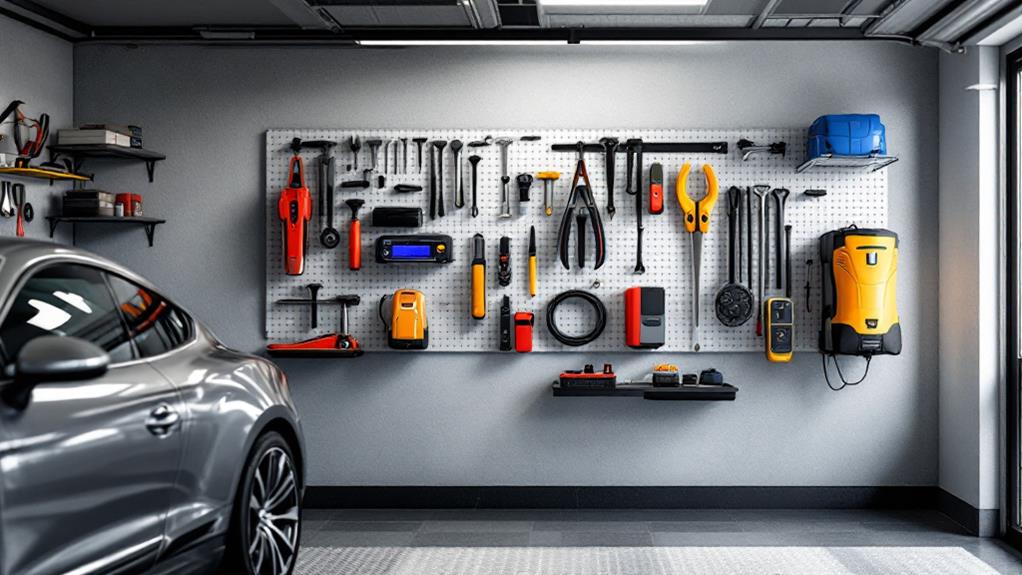The Best Way to Park an Electric Vehicle in Your Home Garage
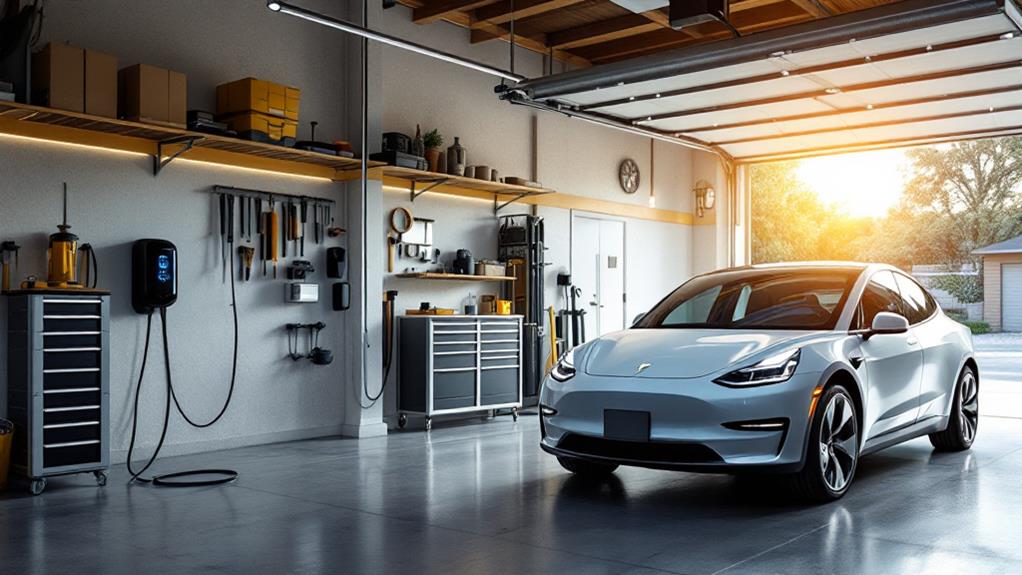
To park your electric vehicle in your home garage ideally, start by choosing the right charging level and evaluating your electrical capacity. Organize your garage space to accommodate the charging station, ensuring easy access and maneuverability. Select an optimal charger location near your electrical panel and install the necessary infrastructure. Purchase a compatible charging system and position your EV to minimize cable distance while avoiding tripping hazards. Park close to the wall where the circuit breaker is installed for shorter wiring runs. Consulting with your EV charger manufacturer can provide helpful information on maximizing your garage's layout for efficient charging. The following tips will help you create the perfect setup for your EV.
Choose Your Charging Level
Several factors come into play when choosing your EV charging level. The most essential considerations are your driving habits, charging speed requirements, and convenience preferences. For home garage charging, you'll typically choose between Level 1 and Level 2 options.
Level 1 charging uses a standard 120-volt outlet, which is readily available in most garages. However, it's slow, taking about 24 hours for a full charge. This might suffice if you have a short commute or don't drive daily. On the other hand, Level 2 charging requires installing a 240-volt charging station connected to your home's electrical panel. While it involves more upfront cost, it dramatically reduces charging time, providing 60-200 miles of range in just half an hour.
Many EV owners opt for a Level 2 charger in their home garage due to its speed and convenience. It allows for flexible charging schedules, accommodating both daytime top-offs and overnight fill-ups. When deciding, consider your daily driving distance, time spent at home, and budget. Remember, the right charging level should seamlessly integrate with your lifestyle, ensuring your EV is always ready when you need it.
Organize Your Garage Space
Once you've decided on your charging setup, it's time to ponder how you'll arrange your garage space. Making your garage EV-ready involves more than just installing a home charging station. You'll need to contemplate the best location for your electric vehicle supply equipment and guarantee it's easy to access when you park your car.
To optimize your indoor parking area for your electric vehicle, consider these key factors:
- Proximity to the electrical panel
- Cord length and reach
- Clearance for opening doors
- Accessibility for maintenance
- Future-proofing for additional EVs
Prepare your garage by decluttering and reorganizing to accommodate your new EV charging station. You may need to relocate tools, storage shelves, or other items to create a dedicated space for your electric vehicle. Ensure there's enough room to maneuver around your car while it's charging, and mull over installing bright lighting to improve visibility.
When choosing the best location for your charging equipment, think about your daily routine and how you typically park your car. Position the charger where it's convenient to plug in every time you return home, making the charging process a seamless part of your daily life.
Assess Electrical Capacity

Before installing your EV charging station, you'll need to assess your home's electrical capacity. Start by determining your electric panel's current rating to guarantee it can handle the additional load of charging an EV at home. Review your recent utility bills to evaluate your average household electricity usage and identify potential concerns about future power consumption.
Next, consult a certified electrician to assess your home's power capabilities. They'll recommend whether you need a 240-volt plug or a hardwired circuit for your charge port. This professional evaluation is essential for a standard home's electrical system to accommodate an EV charger safely.
Factor in the installation costs, which can range from a few hundred to a few thousand dollars, depending on your home's specific needs. Discuss any concerns about future power consumption with your electrician to ensure your electrical system can handle the additional load. They may suggest upgrading to a higher amp panel if necessary.
Remember to inquire about potential tax credits for EV charging station installations, as these can help offset some of the costs associated with preparing your garage for your electric vehicle.
Select Optimal Charger Location
Choosing the right location for your EV charging station is essential for convenience and efficiency. When you're planning to charge an electric car at home, you'll want to carefully consider the ideal spot for your Level 2 charging station. As you talk about your garage and potential remodel, keep in mind that the EV charger installation should be close to your vehicle's primary parking spot. This proximity will minimize cable length and reduce installation costs.
During your garage remodel, consider these key factors for selecting the location for an EV charger:
- Accessibility: Ensure the charging station doesn't obstruct foot traffic or vehicle movement
- Proximity to electrical panel: Install near the main panel to shorten wiring distance
- Weather protection: For outdoor installations, choose a secure, sheltered spot
- Cable management: Position the charger to avoid tripping hazards
- Convenience: Place it where you can easily plug in and unplug your vehicle
Install Necessary Electrical Infrastructure
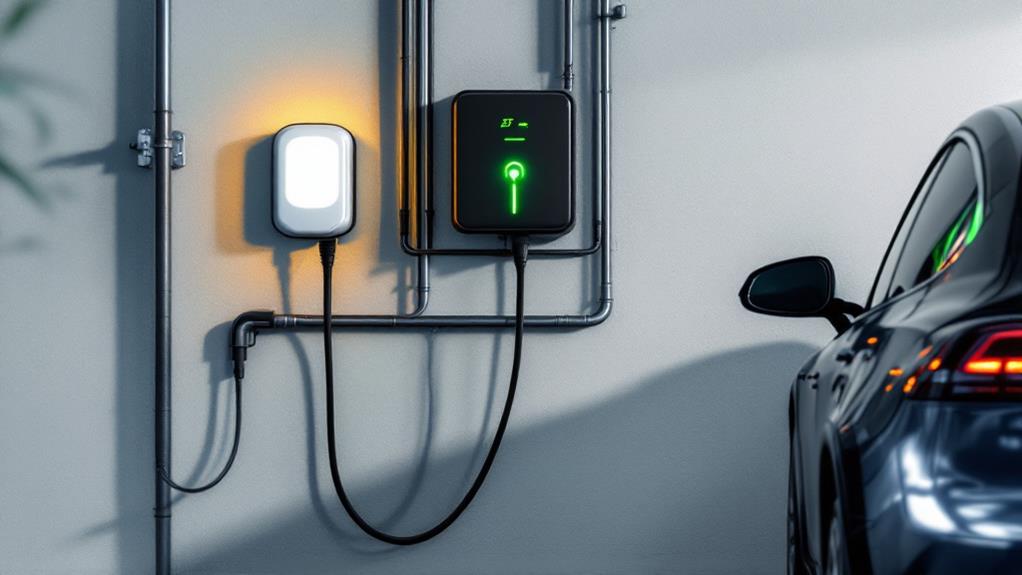
To set up your EV charging station, you'll need to plunge into the electrical infrastructure requirements. Start by consulting a licensed electrician to assess your home's electrical capacity. They'll determine if you need a higher amperage panel or a dedicated circuit to support your new electric car charger.
Before any work begins, obtain the necessary permits from local authorities. This guarantees your installation meets safety standards and code requirements. You'll want to install a 240-volt outlet or have a hardwired Level 2 charger mounted. These provide faster charging speeds, giving your electric vehicle 10-20 miles of range per hour, compared to slower Level 1 charging from standard 120-volt outlets.
Consider the proximity of your charging station to the main electrical panel. Longer cable runs can drastically increase installation costs, so choose a location that minimizes expenses while keeping the charger accessible. Confirm your chosen spot allows for easy parking and charger connection, avoiding potential tripping hazards.
Purchase Compatible Charging System
With your electrical infrastructure ready, it's time to select the right charging system for your electric vehicle. When choosing the right charger for your new EV, opt for a Level 2 home charging system that provides 10-20 miles of range per hour of charging. This basic level offers the best balance of convenience and charging speed for most EV owners.
Ensure the charging system you select is compatible with your vehicle's make and model to guarantee safe and efficient charging. Consider hardwiring your charger rather than using a plug-in model for a more secure and consistent power connection. While installation costs can range from $600 to over $1,000, it's a worthwhile investment for reliable charging.
When selecting your charging system, look for these features:
- Wi-Fi connectivity
- Scheduling capabilities
- Smartphone app integration
- Compatibility with your vehicle's Charging Port
- Appropriate charging speed for your needs
Optimize Parking Position
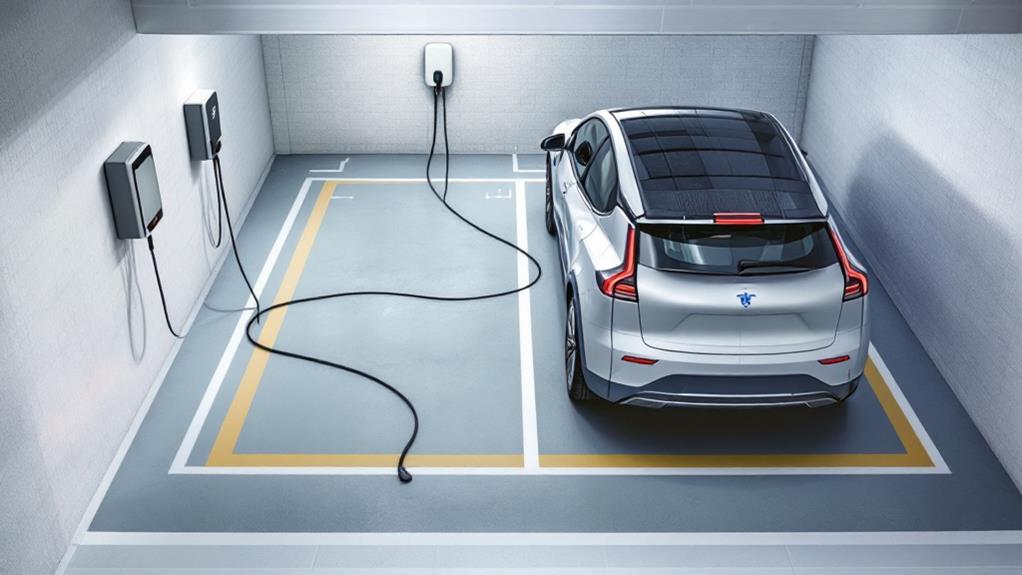
Once you've installed your charging system, optimizing your parking position becomes essential for efficient charging and convenience. To get the most out of your electric vehicles (EVs), you'll need to guarantee that your parking spot allows easy access to the charging port. Choose a charging location that minimizes the distance between your EV and the charger, reducing the risk of tripping hazards from long cables.
When getting your garage ready for an EV, consider the layout and dimensions of your space. Park your vehicle close to the wall where the circuit breaker is installed, allowing for shorter wiring runs and potentially lower installation costs. You'll also want to leave enough room to maneuver around your car while it's charging.
Position your EV so that the charging port aligns with the installed charger. This alignment will make it easier to plug in and fully charge your vehicle without straining the cable. If you're unsure about the best parking position for your specific EV and charger setup, many EV chargers manufacturers offer a FREE CONSULTATION to help you optimize your garage layout for efficient charging.
